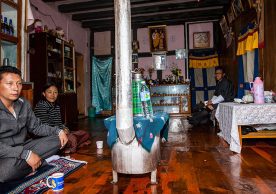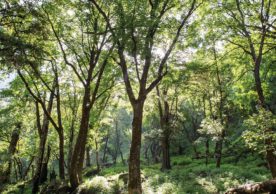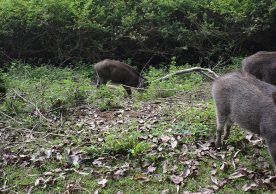This site uses cookies, as explained in our terms of use. If you consent, please close this message and continue to use this site.
This site uses cookies, as explained in our terms of use. If you consent, please close this message and continue to use this site.

India and Myanmar discuss concrete, collaborative action for tiger conservation

The tiger is a flagship species in the Far Eastern Himalaya that plays a pivotal role in the landscape’s ecological balance, and important wildlife corridors straddling India and Myanmar help maintain healthy tiger populations. Transboundary collaboration is necessary to manage such corridors, monitor tigers, and curb illegal cross-border trade in wildlife. Recognizing this, India and Myanmar signed an MoU in February 2020 to cooperate on combating timber trafficking and the conservation of tigers and other wildlife species.
To explore how the two countries can take collective action within the broader framework of the MoU, we conducted a virtual meeting on 9 October 2020 between government and forestry officials and conservation experts from Bhutan, India, Myanmar, and Nepal. Speakers shared regional knowledge and best practices in tiger conservation from the region and stressed strengthening national commitments to conservation, bilateral collaboration on monitoring and knowledge exchange, and a focus on the landscape approach to secure the source population.

Assessing Sudurpaschim Province’s potential for export and income generation

Global uptake of a community-based REDD+ approach Recognizing the importance of reducing emission from deforestation and forest degradation (REDD), there was ...

Tourism is an important priority area for national and local governments across Bhutan, India, and Nepal. ...

Nepal’s Forest Act (2019) now integrates payment for ecosystem services through a special provision

To strengthen efforts at mitigating human–wildlife conflict (HWC) in the Kangchenjunga Landscape (KL), we have trained ...

Regional cooperation on yak conservation benefits forged through events and networks in the Kanchenjunga Landscape

Homestays are a unique community-based tourism product spread across the Kangchenjunga Landscape (KL) which have improved ...

A project in Nepal’s middle hills works to address problems of water scarcity In Tinpiple, a village in Kavre District approximately ...

Assessing Sudurpaschim Province’s potential for export and income generation

Global uptake of a community-based REDD+ approach Recognizing the importance of reducing emission from deforestation and forest degradation (REDD), there was ...

Tourism is an important priority area for national and local governments across Bhutan, India, and Nepal. ...

Nepal’s Forest Act (2019) now integrates payment for ecosystem services through a special provision

To strengthen efforts at mitigating human–wildlife conflict (HWC) in the Kangchenjunga Landscape (KL), we have trained ...

Regional cooperation on yak conservation benefits forged through events and networks in the Kanchenjunga Landscape

Homestays are a unique community-based tourism product spread across the Kangchenjunga Landscape (KL) which have improved ...

A project in Nepal’s middle hills works to address problems of water scarcity In Tinpiple, a village in Kavre District approximately ...

Assessing Sudurpaschim Province’s potential for export and income generation

Global uptake of a community-based REDD+ approach Recognizing the importance of reducing emission from deforestation and forest degradation (REDD), there was ...

Tourism is an important priority area for national and local governments across Bhutan, India, and Nepal. ...

Nepal’s Forest Act (2019) now integrates payment for ecosystem services through a special provision